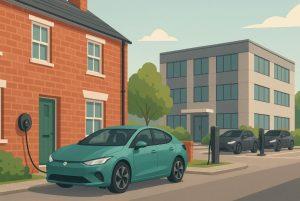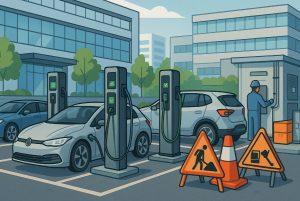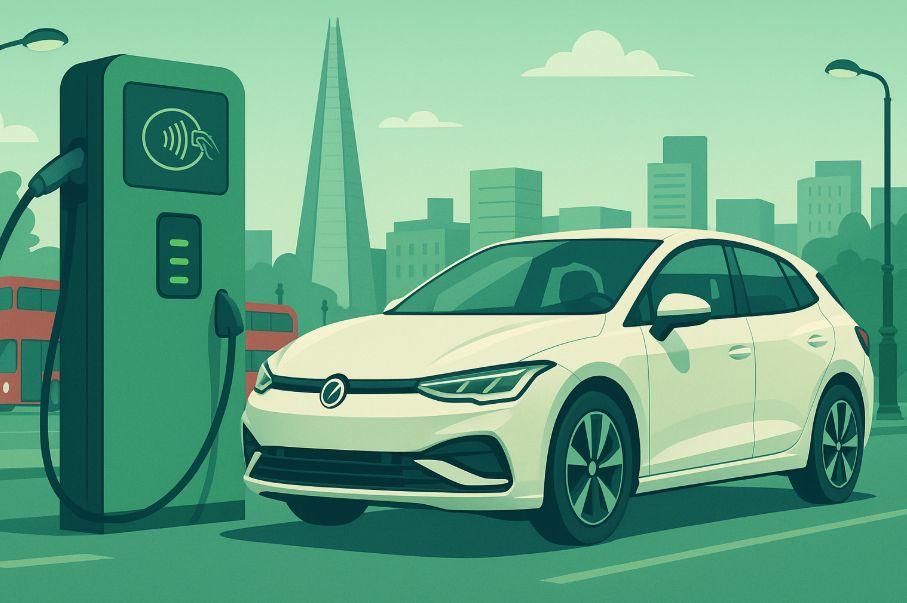With the UK’s commitment to reaching net-zero emissions by 2050, electric vehicles (EVs) have become a central focus in the nation’s transport and climate strategy. In line with this vision, the government has introduced a sweeping set of electric vehicle charging reforms to enhance accessibility, affordability, and fairness in the charging ecosystem.
For consumers in London and across the UK, the pressing question remains do these reforms genuinely improve the EV experience, or do they merely scratch the surface of deeper infrastructure challenges?
This article offers a detailed analysis of the current reforms and evaluates whether they serve the interests of the everyday electric vehicle user.
What Are the New Electric Vehicle Charging Reforms in the UK?
 The latest reforms, introduced between 2024 and 2025, are part of the UK government’s broader plan to streamline and scale up electric vehicle charging infrastructure. These measures were introduced in response to growing criticism of unreliable public charge points, complicated payment systems, and inconsistent pricing models that left many EV users frustrated.
The latest reforms, introduced between 2024 and 2025, are part of the UK government’s broader plan to streamline and scale up electric vehicle charging infrastructure. These measures were introduced in response to growing criticism of unreliable public charge points, complicated payment systems, and inconsistent pricing models that left many EV users frustrated.
Among the headline changes, the government has mandated that all newly installed public EV chargers offering 8 kW or above must provide contactless card payment options. This removes the dependency on proprietary apps and registration processes, making it easier for users especially visitors or those less tech-savvy to plug in and power up without hassle.
Another significant move is the legal enforcement of transparent pricing. Charging operators are now required to display the full cost of charging, including pence per kilowatt-hour, before a session begins. This level of clarity was largely absent before and often led to unexpected charges.
How Will These Charging Reforms Impact Daily EV Users?
For Londoners navigating dense urban areas, the impact of these reforms will likely be felt in both subtle and significant ways. The removal of barriers such as app-only payment systems and the lack of standardised pricing is a major win for the average user.
The simplicity of being able to tap a card and see upfront what a charging session will cost brings a level of convenience and trust that has been sorely lacking in the UK’s EV infrastructure to date.
Are Public Charging Points Becoming More Accessible and Reliable?
Accessibility and reliability are at the core of the current reforms. One of the government’s main objectives has been to ensure that public EV charging works smoothly and predictably across the country, including in London, where demand is already high and continues to grow. The enforcement of minimum reliability thresholds, such as the 99% uptime requirement for rapid charging stations, is a critical step forward.
Do Consumers Have a Right to Charge at Home and Work?
 One of the more transformative aspects of the reforms is the formalisation of the “right to charge.” This policy shift addresses a long-standing issue, particularly for city dwellers living in flats, rented homes, or multi-unit buildings where the installation of private EV charge points has historically been complicated or outright blocked by landlords or managing agents.
One of the more transformative aspects of the reforms is the formalisation of the “right to charge.” This policy shift addresses a long-standing issue, particularly for city dwellers living in flats, rented homes, or multi-unit buildings where the installation of private EV charge points has historically been complicated or outright blocked by landlords or managing agents.
Under the new guidelines, tenants and leaseholders now have the legal right to request the installation of an EV charging point. Landlords are expected not to withhold consent unreasonably, thereby facilitating greater access to home charging, which remains the most cost-effective and convenient option for most EV users. This also extends to commercial properties, with workplace charging now actively encouraged and supported through government grants.
Are Charging Costs More Transparent After the Reforms?
Before the reforms, the cost of charging an electric vehicle was often unclear. Pricing models varied across operators, with some including fees for connection, time-based charging, or even idle time, leading to confusion and inconsistent billing. The lack of uniform pricing also made it difficult for consumers to compare options and plan their expenses effectively.
Today, charging operators are required to display pricing clearly and consistently in pence per kilowatt-hour. This allows drivers to assess the full cost of a charging session before initiating it, preventing surprise charges and empowering consumers to make more informed decisions. Integration with apps like Zap-Map and Google Maps further supports this by offering real-time data on pricing and availability, making route and cost planning more accessible.
To illustrate this shift:
| Feature | Before Reforms | After Reforms |
| Contactless Payment | Often unavailable | Mandatory on new installations |
| Transparent Pricing | Inconsistent | Legally required |
| Residential Charging Rights | Limited | Protected under “Right to Charge” |
| Workplace Charging | Optional | Encouraged with grant support |
| Uptime & Reliability Standards | Variable | Enforced minimum thresholds |
The end result is a more accountable and competitive charging network, with pricing transparency acting as a catalyst for consumer trust and broader EV adoption.
What Role Does Smart Charging Play in These Reforms?
Smart charging has become a foundational aspect of the UK’s EV policy. As the number of electric vehicles grows, so does the pressure on the national grid. Smart charging helps manage this demand by enabling dynamic energy use, allowing EVs to draw power during off-peak hours when electricity is cheaper and more abundant.
Under the new reforms, all new private chargers both at home and in workplaces must be smart-enabled. These devices can be scheduled to charge during times when the grid is under less stress, and some can even return electricity to the grid when needed. For consumers, this offers an opportunity to reduce their energy bills and contribute to a more sustainable energy system.
How Are Businesses and Landlords Adapting to New EV Rules?
 Businesses, especially those in retail, hospitality, and logistics, are already adjusting to the demands of the new EV charging rules. Retail giants and supermarket chains are leading the charge, quite literally, by installing ultra-rapid chargers in customer car parks. For smaller businesses and landlords, the path is less straightforward.
Businesses, especially those in retail, hospitality, and logistics, are already adjusting to the demands of the new EV charging rules. Retail giants and supermarket chains are leading the charge, quite literally, by installing ultra-rapid chargers in customer car parks. For smaller businesses and landlords, the path is less straightforward.
While government grants are available to support installation costs, not all landlords or business owners have the capacity or motivation to implement such changes quickly. The reforms do place more responsibility on these stakeholders, and in the long term, those who invest in EV infrastructure are likely to benefit from increased customer and tenant satisfaction, as well as enhanced property value.
What Should London Consumers Expect Next in the EV Space?
The pace of change in the EV sector is only accelerating. In London, where the pressure to reduce emissions is particularly intense, the next phase of EV evolution is already in motion. Local councils are working to integrate charge points into lamp posts and kerbsides, making it easier for residents without driveways to charge overnight.
Meanwhile, investment is increasing in ultra-fast chargers, with strategic placements on major roads and in commercial zones. Consumers can also expect further incentives for switching to electric, including reduced congestion charges and exclusive parking benefits.
Looking further ahead, the upcoming ban on the sale of new petrol and diesel vehicles by 2035 will push even more drivers towards electric options, reinforcing the need for robust and consumer-focused charging infrastructure.
Conclusion
The current wave of electric vehicle charging reforms certainly represents a meaningful step forward for EV users. The combination of contactless payments, transparent pricing, enforced reliability, and residential rights creates a framework that prioritises consumer convenience and fairness.
However, the success of these reforms will depend largely on execution. While the policies are well-intentioned, ensuring compliance and adapting infrastructure across such a diverse range of properties and locations remains a significant challenge. As London and the rest of the UK continue their transition to electric mobility, continued government oversight and support will be essential to ensure that these reforms deliver on their promise.
FAQs
What is the “Right to Charge” policy in the UK?
It gives tenants and flat owners the legal right to request EV charger installations, with landlords expected to reasonably accommodate.
How does contactless payment benefit EV users?
It simplifies the charging process by removing the need for apps or registrations, making public charging more convenient.
Are there penalties for non-compliance with charging reforms?
Yes, operators that fail to meet legal standards for reliability, transparency, or access may face regulatory action or lose funding.
Will the reforms lead to lower EV charging costs?
While they don’t directly control prices, increased competition and transparency could make charging more affordable in the long term.
Can people in flats now install home EV chargers more easily?
Yes, planning rules have been eased, and legal protections ensure more access, though some technical challenges still exist.
Do the reforms address charging availability in rural areas?
Yes, government funding is also targeting rural and underserved areas to expand equitable access to EV charging.
How do smart chargers help consumers?
They allow drivers to charge at cheaper off-peak times and reduce strain on the electricity grid, lowering costs and supporting sustainability








